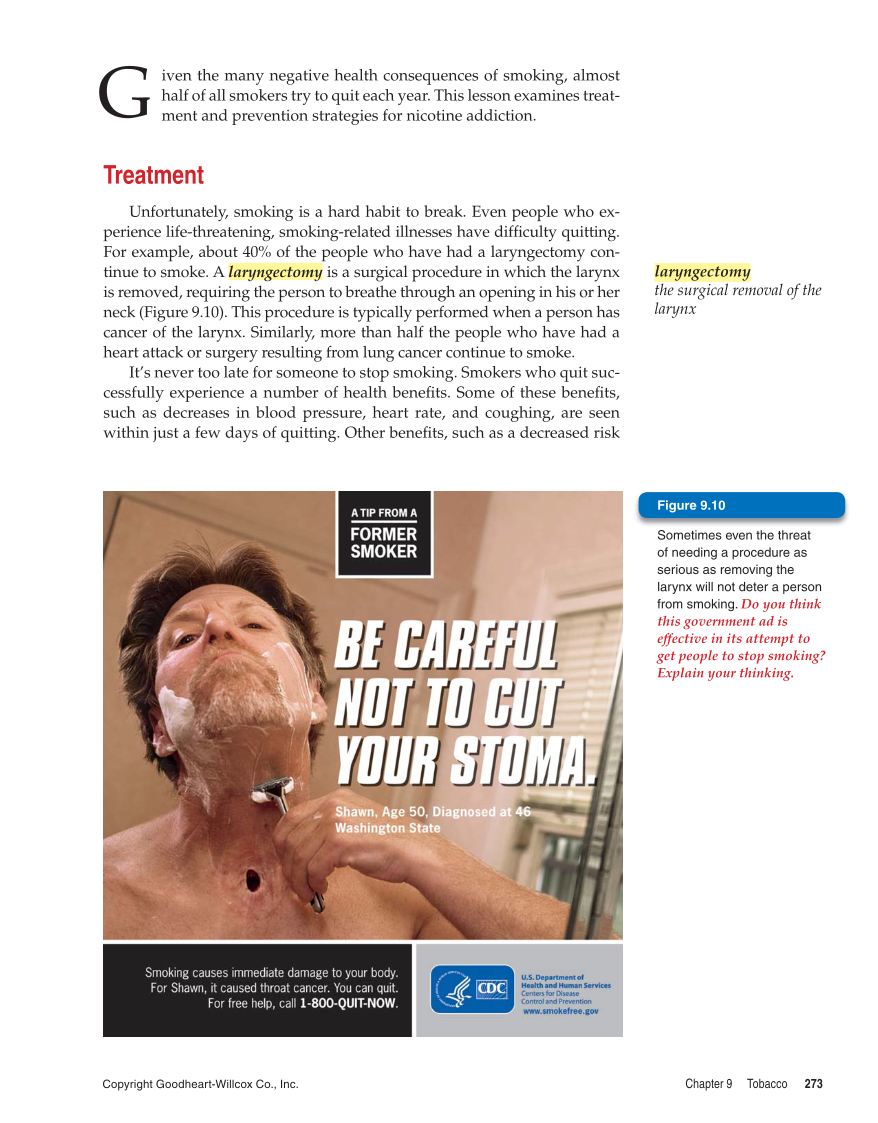Copyright Goodheart-Willcox Co., Inc.
Chapter 9 Tobacco 273
iven the many negative health consequences of smoking, almost
half of all smokers try to quit each year. This lesson examines treat-
ment and prevention strategies for nicotine addiction.
Treatment
Unfortunately, smoking is a hard habit to break. Even people who ex-
perience life-threatening, smoking-related illnesses have diffi culty quitting.
For example, about 40% of the people who have had a laryngectomy con-
tinue to smoke. A laryngectomy is a surgical procedure in which the larynx
is removed, requiring the person to breathe through an opening in his or her
neck (Figure 9.10). This procedure is typically performed when a person has
cancer of the larynx. Similarly, more than half the people who have had a
heart attack or surgery resulting from lung cancer continue to smoke.
It’s never too late for someone to stop smoking. Smokers who quit suc-
cessfully experience a number of health benefi ts. Some of these benefi ts,
such as decreases in blood pressure, heart rate, and coughing, are seen
within just a few days of quitting. Other benefi ts, such as a decreased risk
G
laryngectomy
the surgical removal of the
larynx
Sometimes even the threat
of needing a procedure as
serious as removing the
larynx will not deter a person
from smoking. Do you think
this government ad is
effective in its attempt to
get people to stop smoking?
Explain your thinking.
Figure 9.10
